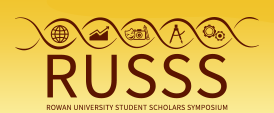Date of Presentation
4-26-2019 12:00 PM
College
College of Science & Mathematics
Faculty Sponsor(s)
Eve Sledjeski
Poster Abstract
Program: BS in Psychological Science
IRB#: Pro2018000277
The current study investigates the relationship between color and time perception. Prior research suggests that red stimuli create a greater temporal distortion than other colors, and that the direction of the distortion (i.e. underestimation or overestimation) varies with context. Research also shows that red stimuli tend to have negative effects on performance in academic contexts, perhaps due to the psychological and physiological arousal. This study specifically investigates the effect of arousal on this relationship, being the first to investigate the relationship between red, time perception, arousal, and task performance on a concurrent task in a mediation model. It is expected that red stimuli will cause poorer performance and greater overestimation of duration compared to a blue control group. Participants were randomly assigned to a red and a blue condition, and completed a maze task printed in either red or blue ink while their heart rate was monitored throughout the task. They were then asked to estimate the time they took to complete the task, and this estimate will be compared to their actual time. They also filled out a measure of subjective emotional response. The analysis will be a mediation model conducted through hierarchical linear regression, with physiological and subjective arousal as potential mediators for the relationship between color and both task performance and temporal distortion. Results will be discussed.
Student Keywords
Time Perception, Color, Task Performance, Arousal, Red, Blue
Disciplines
Cognition and Perception | Cognitive Psychology | School Psychology
Document Type
Poster
Included in
Cognition and Perception Commons, Cognitive Psychology Commons, School Psychology Commons
The Effect of Color on Time Perception and Task Performance
Program: BS in Psychological Science
IRB#: Pro2018000277
The current study investigates the relationship between color and time perception. Prior research suggests that red stimuli create a greater temporal distortion than other colors, and that the direction of the distortion (i.e. underestimation or overestimation) varies with context. Research also shows that red stimuli tend to have negative effects on performance in academic contexts, perhaps due to the psychological and physiological arousal. This study specifically investigates the effect of arousal on this relationship, being the first to investigate the relationship between red, time perception, arousal, and task performance on a concurrent task in a mediation model. It is expected that red stimuli will cause poorer performance and greater overestimation of duration compared to a blue control group. Participants were randomly assigned to a red and a blue condition, and completed a maze task printed in either red or blue ink while their heart rate was monitored throughout the task. They were then asked to estimate the time they took to complete the task, and this estimate will be compared to their actual time. They also filled out a measure of subjective emotional response. The analysis will be a mediation model conducted through hierarchical linear regression, with physiological and subjective arousal as potential mediators for the relationship between color and both task performance and temporal distortion. Results will be discussed.

